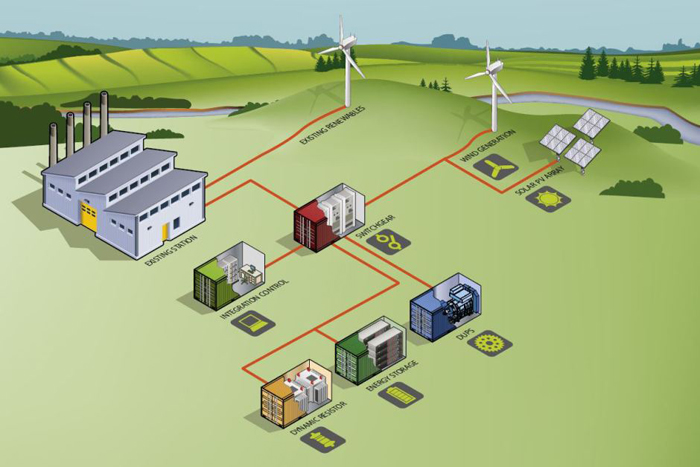Industry makes the running while the politics of climate and energy remain in a rut

Schematic drawing of Flinders Island Hybrid Energy Hub. IMAGE Hydro Tasmania
Politicians and others holding out for a fossil-fuelled future had a big win last week. On top of the Turnbull government’s relentless denigration of wind and solar power, their leader finally declared implacable opposition to a carbon price of any kind. Which leaves Coalition emissions policy up the proverbial with no steerage.
Incredibly, for the sake of party unity Turnbull has turned his back on all administrative, economic and industry advice, plus his own advice to his party a few years ago. The likely result is continuing energy business uncertainty and, contrary to claims of Turnbull and others, higher power prices.
But where a price on carbon price seems to be entirely a matter for politicians, that isn’t the case for the rollout of renewable energy, where progress continues despite the uncertain investment climate. Contrary to government claims, new technologies are showing that a power grid relying heavily on intermittent wind and solar, besides being highly desirable, is also eminently achievable.
There’s a substantial backstory to this. After low hydro storages and a Basslink outage delivered an unpleasant summer and autumn for the Tasmanian government, power price spikes in July and August and an electricity blackout in September put a spotlight on South Australian energy policies.
Both experiences tell us that no energy scheme is immune from breakdown under extreme weather conditions. South Australia also taught us that managing fluctuating demand is a work in progress.
An Australian Energy Regulator review found that when mandatory supply regulations were invoked while a Victoria-SA interconnector was being serviced, leading suppliers Origin and AGL pushed gas-fired power prices to astronomical levels by re-bidding for ancillary services.
This was compounded by the need to deal with intermittent supply, an issue that has exercised power utilities around the world as wind and solar energy become major players in energy grids.
One of the take-home messages from the energy policy review led by chief scientist Alan Finkel, delivered to COAG last Friday, is that it’s no big deal to use large amounts of wind and solar power in electricity grids, but it does need some structural reform.
This new technology is the antithesis of today’s centralised power systems, says the Finkel report. If they are to accommodate distributed generation such as batteries and rooftop solar feeding into the grid, a market restructure and new energy management policies will be needed.
If we want to know what Australia’s revamped electricity system could look like, off-grid communities like Tasmania’s Bass Strait islands are a good place to start.
A fortnight ago, Flinders Island was the venue for a gathering of industry players and leading-edge researchers attending a professional development seminar hosted by the University of Tasmania and Hydro Tasmania (including its development arm, Entura).
The event’s centrepiece was the island’s new hybrid power system, built by Hydro with leading-edge UTAS research and Australian Renewable Energy Agency funding, and now fully operational
Drawing on intermittent solar and wind energy, with backup battery storage, the new system uses a flywheel and a dynamic braking resistor to keep power levels in harmony with demand.
The Flinders project will initially cut the island’s diesel bill by about two-thirds, and can run entirely on wind, solar and battery power. It’s a repeat of the story on King Island, where a similar modular system deployed last year has brought electricity emissions down to near-zero.
Another Tasmanian island is in the renewable energy spotlight. Tasmanian power distributor TasNetworks is leading a trial of home-based solar-battery systems on Bruny Island to help it understand how the state as a whole could benefit from embedded generation and storage.
TasNetworks is also trialling a new tariff arrangement with southern Midlands households to work out how advanced metering and smartphone apps can save costs for both them and the network.
All this and much more – including the vexed question of new interstate connections – will feed into planning for a revamped national electricity market. But we need political leaders to stop bashing renewables and lift their gaze to see what’s happening in the world outside their cocoon.
